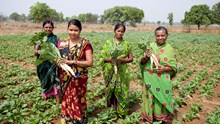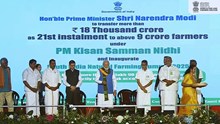
A severe heatwave is sweeping across large parts of northwest and central India, with the India Meteorological Department (IMD) issuing red and orange alerts for multiple states. Rajasthan, Gujarat, Punjab, and parts of Madhya Pradesh are among the worst affected, while the national capital, Delhi, continues to sizzle under rising temperatures.
According to the IMD, West Rajasthan is experiencing severe heatwave conditions, with temperatures rising significantly above normal levels. Heatwave conditions are also affecting various areas in East Rajasthan, Saurashtra and Kutch, Himachal Pradesh, Punjab, and the Gujarat region. Additionally, parts of Haryana, Delhi, West Madhya Pradesh, and Vidarbha are facing intense heat.
The temperature in Delhi/NCR has risen to 41°C, with minimum temperatures around 25°C, which is about 5–6°C above normal. The India Meteorological Department (IMD) has issued a warning that heatwave conditions will continue in the region on April 8 and 9. However, a slight relief is expected starting April 10, with cloudy skies and the possibility of thunderstorms.
Relief Likely After April 10
As Delhi endures extreme temperatures, some relief is anticipated with a change in the weather starting April 10, according to the IMD. Thunderstorms, accompanied by gusty winds of 30–40 km/h, are expected to bring light rain and some much-needed cooling. On April 11, the weather may become cloudy, and there is a possibility of very light rain or drizzle.
Additionally, the IMD has issued alerts for warm night conditions in parts of Madhya Pradesh, Maharashtra, Punjab, and Delhi, where night temperatures remain unusually high, contributing to discomfort levels.
The southern states are also facing high temperatures accompanied by increased humidity. Areas such as Tamil Nadu, Kerala, Puducherry, Goa, and Madhya Maharashtra are expected to experience hot and humid conditions, particularly on April 8 and 9.
IMD has advised residents in affected areas to avoid going outside during peak afternoon hours, stay hydrated, and wear lightweight, breathable clothing. Farmers, laborers, children, and the elderly are especially vulnerable during this time. Residents are encouraged to remain vigilant and closely follow official weather updates.
















